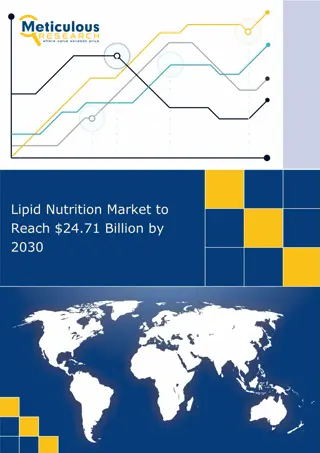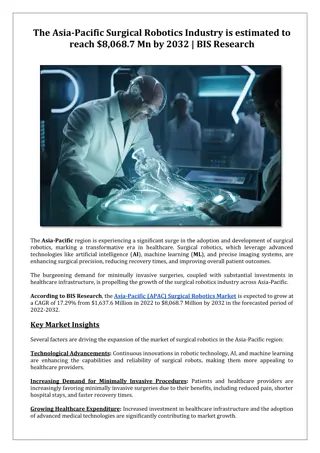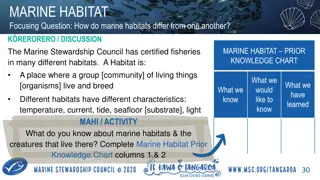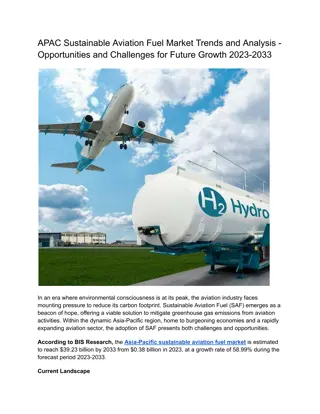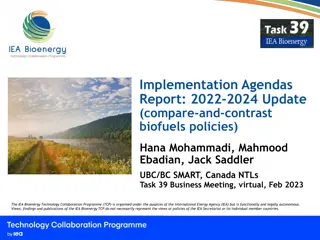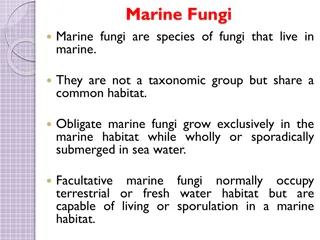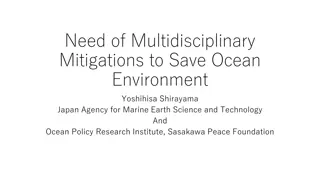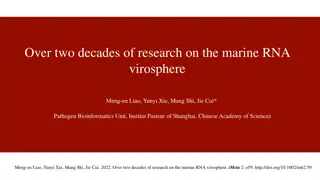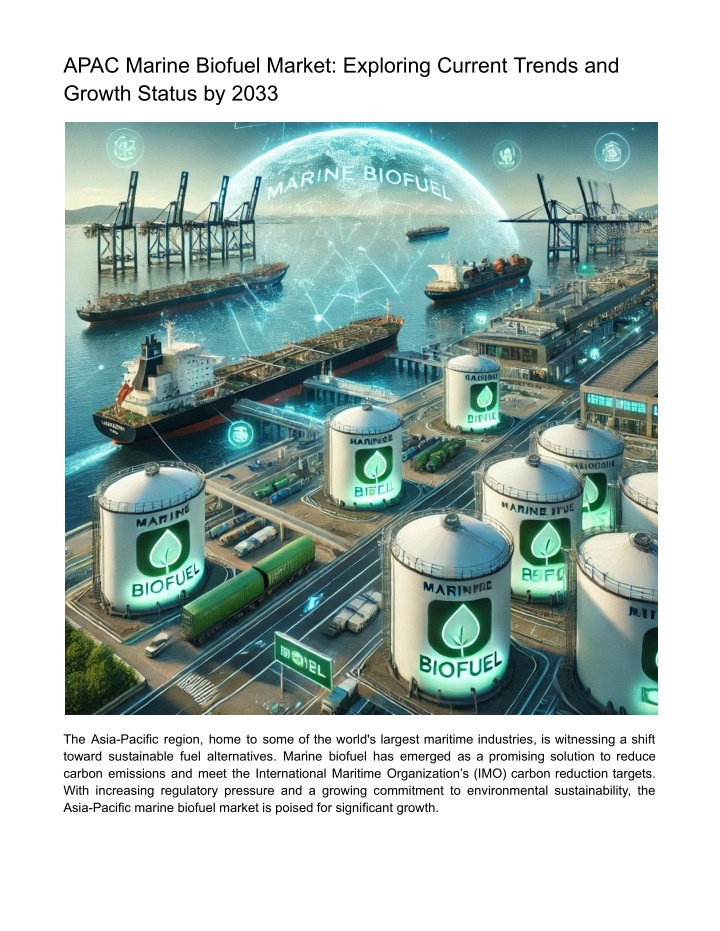
APAC Marine Biofuel Market Exploring Current Trends and Growth
The Asia-Pacific marine biofuel market was valued at $662.1 million in 2023 and is expected to reach $2,230.4 million by 2033 at a CAGR of 12.91% from 2023 to 2033.nnRead Report Overview: //bisresearch.com/industry-report/asia-pacific-marine-bi
Download Presentation

Please find below an Image/Link to download the presentation.
The content on the website is provided AS IS for your information and personal use only. It may not be sold, licensed, or shared on other websites without obtaining consent from the author. If you encounter any issues during the download, it is possible that the publisher has removed the file from their server.
You are allowed to download the files provided on this website for personal or commercial use, subject to the condition that they are used lawfully. All files are the property of their respective owners.
The content on the website is provided AS IS for your information and personal use only. It may not be sold, licensed, or shared on other websites without obtaining consent from the author.
E N D
Presentation Transcript
APAC Marine Biofuel Market: Exploring Current Trends and Growth Status by 2033 The Asia-Pacific region, home to some of the world's largest maritime industries, is witnessing a shift toward sustainable fuel alternatives. Marine biofuel has emerged as a promising solution to reduce carbon emissions and meet the International Maritime Organization s (IMO) carbon reduction targets. With increasing regulatory pressure and a growing commitment to environmental sustainability, the Asia-Pacific marine biofuel market is poised for significant growth.
According to BISResearch, the Asia-Pacific marine biofuel market was valued at $662.1 million in 2023 and is expected to reach $2,230.4 million by 2033 at a CAGR of 12.91% from 2023 to 2033. How are marine biofuels produced? Marine biofuels can be produced through various processes including biomass fermentation, transesterification (for biodiesel), and thermochemical conversion. Sources like algae are cultivated and processed to extract oils that can be refined into biofuels. Key Trends in the APAC Marine Biofuel Market Regulatory Push for Low-Carbon Fuels: The IMO has set ambitious goals to cut greenhouse gas (GHG) emissions by at least 50% by 2050 compared to 2008 levels. This has encouraged the adoption of biofuels, which can significantly lower carbon footprints compared to conventional marine fuels. Growing Investments in Biofuel Production: Countries such as Singapore, Japan, and Australia are investing heavily in biofuel research and development. Singapore, in particular, has positioned itself as a leading hub for sustainable shipping and is conducting multiple trials of biofuel blends in commercial shipping operations. Expansion of Feedstock Sources: Marine biofuels are derived from various feedstocks, including used cooking oil, agricultural waste, and algae-based oils. The Asia-Pacific region, rich in biomass resources, has a competitive edge in scaling up biofuel production to meet growing demand. Partnerships Between Shipping Companies and Biofuel Suppliers: Major shipping companies, including Maersk and MOL (Mitsui O.S.K. Lines), have initiated biofuel pilot projects in collaboration with energy firms. These partnerships aim to enhance fuel efficiency and reduce emissions across shipping routes in the region. Request A Free Sampleon the APAC Marine Biofuel Market! APAC Marine Biofuel Market Challenges High Production Costs: Compared to conventional marine fuels, biofuels are more expensive due to production and refinement costs. Large-scale adoption depends on government incentives and technological advancements to make biofuels more cost-competitive. Infrastructure and Supply Chain Limitations: The marine biofuel industry requires a well-established infrastructure for distribution and storage. Many ports in the Asia-Pacific region are still adapting to support biofuel bunkering, posing a temporary barrier to widespread adoption. Feedstock Availability and Sustainability Concerns: While biofuels offer a greener alternative, large-scale production must ensure feedstock sustainability. Over-reliance on certain raw materials may lead to supply chain imbalances or environmental concerns related to deforestation and land use. Future Outlook The Asia-Pacific marine biofuel market is expected to grow steadily over the next decade. Innovations in feedstock processing, favorable government policies, and technological advancements in biofuel
production will drive market expansion. Furthermore, strategic collaborations between governments, energy providers, and maritime operators will play a pivotal role in accelerating adoption. As demand for sustainable shipping solutions rises, biofuels will become an integral part of the region s decarbonization strategy. With continuous investments and regulatory support, the Asia-Pacific marine biofuel market is set to revolutionize the maritime industry and contribute to a greener future. Download Our ToC: Click Here! Conclusion The transition to marine biofuels in the Asia-Pacific region is gaining momentum, driven by regulatory mandates, sustainability goals, and corporate commitments. While challenges exist, the long-term benefits of adopting biofuels such as lower emissions and reduced reliance on fossil fuels are expected to outweigh the initial hurdles. As the industry evolves, marine biofuels will play a crucial role in shaping the future of sustainable maritime transportation in the Asia-Pacific region.


